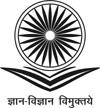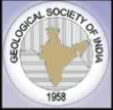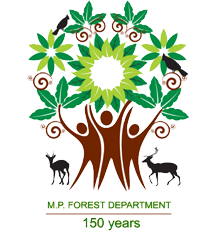/sub-categories/events
Events
National Conference on Environmental Surveillance for Natural Resource Management – 2012, School of Environment & Earth Sciences, January 9 & 10, 2012, Jalgaon
Posted on 04 Jan, 2012 04:03 PMOrganizers: School of Environment & Earth Sciences, North Maharashtra University, Jalgaon
Venue: North Maharashtra University, Jalgaon


Description:
The School of Environmental & Earth Sciences, North Maharashtra University, Jalgaon works in the area of environmental awareness, resource conservation, geological explorations, field visits and social activities in the field of environment, geology and geography. It is recognized as a key resource centre by the Rural Water Supply & Sanitation Department of the Government of Maharashtra. Over a period of 10 years the School has emerged as a centre of quality teaching, research & extension activities in environmental & earth sciences. It has state of art equipments and facilities for research in identified thrust areas.
Living Rivers, Dying Rivers - Eighth in the series of lectures at India International Centre - Rivers in Karnataka , January 28, 2012, New Delhi
Posted on 04 Jan, 2012 03:37 PMDescription:
The eighth in the series of lectures titled "Living Rivers, Dying Rivers" that aims at understanding what has been happening to rivers across India and drawing appropriate lessons is scheduled to be held on January 28, 2012 at the India International Centre, New Delhi. The series is coordinated by Prof. Ramaswamy R. Iyer. The lecture will be delivered by Leo Saldanha, prominent environmental activist, Bangalore.
Training workshop on understanding and resolving water conflicts In the North East India, January 23-26, 2012, Guwahati, Assam
Posted on 04 Jan, 2012 01:48 PM Organizer: Forum for Policy Dialogue,
Aaranyak (Guwahati),
Centre for the Environment, IIT ( Guwahati),
Arghyam (Bangalore),
SaciWATERs-CapNet Network (SCaN),
Cap-Net
Venue: Guwahati, Assam
Training program on domestic wastewater treatment & reuse, CSE, January 18-21,2012, New Delhi
Posted on 03 Jan, 2012 02:19 PMOrganization: Centre for Science and Environment (CSE)
Venue: Anil Aggrawal Green College,
Centre for Science and Environment,
38, Tughlakabad Institutional Area (Near Batra Hospital),
New Delhi- 110062
International Earth Science Olympiad (IESO), Geological Society of India, January 22, 2012
Posted on 02 Jan, 2012 02:46 PM
Organizer: Geological Society of India
Conference on "Management of NWFP for Sustained Livelihood", MPFD, December 17-19 2011, Bhopal
Posted on 20 Dec, 2011 08:42 AMOrganizer: Madhya Pradesh Forest Department, Govt. of M.P. (MPFD)
M.P. Minor Forest Produce Co-operative Federaton Ltd.
Indian Institute of Forest Management, Bhopal
Venue: RCVP Noronha Academy of Administration, Bhopal



Description:
Madhya Pradesh Minor Forest Produce Federation, IIFM and Madhya Pradesh Forest Department have since long been involved in providing livelihood opportunities to forest dwellers and rural households through some direct intervention and also through research and development initiatives. But it is strongly felt that there are many grey areas where still a lot is needed to be done. Further, many good thing are happening around the globe in the field of NWFP management related issues. There are plenty of success stories regarding sustainable livelihood through NWFP marketing & trading. Madhya Pradesh wishes to learn from such experiences. It is in this background MPMFP Federation is organizing an international conference on NWFP.
International training workshop on "Environmental Statistics for Professional", IIT, December 27-30, 2011, Mumbai
Posted on 19 Dec, 2011 09:04 AMOrganizers: Indian Institute of Technology (IIT), Bombay
Thadomal Shahani Engineering College (TSEC), Mumbai
Venue: Thadomal Shahani Enginnering College, P G Kher Road, Off Link Road, Bandra (West), Mumbai
![]()
![]()
Description:
IIT Bombay is organising Workshop on "Environmental Statistics for Professional" jointly with TSEC, Mumbai.
The objective of the proposed Four Day Training Workshop on Environmental Statistics is aimed at familiarizing the teaching community on the application of appropriate statistical techniques, exclusively to environmental systems. The faculty will demonstrate application of various probability and statistics techniques to environmental problems. The training would hopefully help in teaching the subject at their respective Institutions, in a structured manner.
IWM-2011, IIT Bhubaneswar, SIF, SEOC, December 27-29, 2011, Bhubaneswar
Posted on 16 Dec, 2011 11:54 AMOrganizer: School of Infrastructure (SIF), School of Earth Ocean & Climate Sciences (SEOC), IIT Bhubaneshwar
Venue: Institute auditorium, Samantapuri, IIT Bhubaneswar

Description:
SIF and SEOC of IIT, Bhubaneswar are organizing an Workshop on Indian Water Management in 21st Century (IWM-2011) during December 27th-29th 2011.
The programme will be conducted through an interactive workshop wherein international and Indian experts will participate as lecturers and moderators. Equally, the participants will learn from each other as to what solutions have worked, why and what solutions also have not worked and also the technological advances in the field of Water Resources Engineering and Management. The course would be appropriate for professionals from government water agencies (central, state or municipal), universities, research organizations, private sector companies, NGOs and self-employed water professionals.
Safe water dissemination workshop, PATH, January 19-20, 2012, New Delhi
Posted on 16 Dec, 2011 08:40 AMOrganizers: PATH
Venue: India Habitat Centre, Lodhi Road, New Delhi
January 19th – Silver Oak Room; January 20th – Magnolia Hall
Social Media Partner: India Water Portal
24th Kerala Science Congress, KSCSTE & Rubber Board Government of India, January 29-31, 2012, Kottayam
Posted on 11 Dec, 2011 06:06 PMOrganizers: Kerala State Council for Science Technology and Environment Government of Kerala (KSCSTE)
Rubber Board Government of India, Kottayam
Venue: Rubber Board P.O., Kottayam